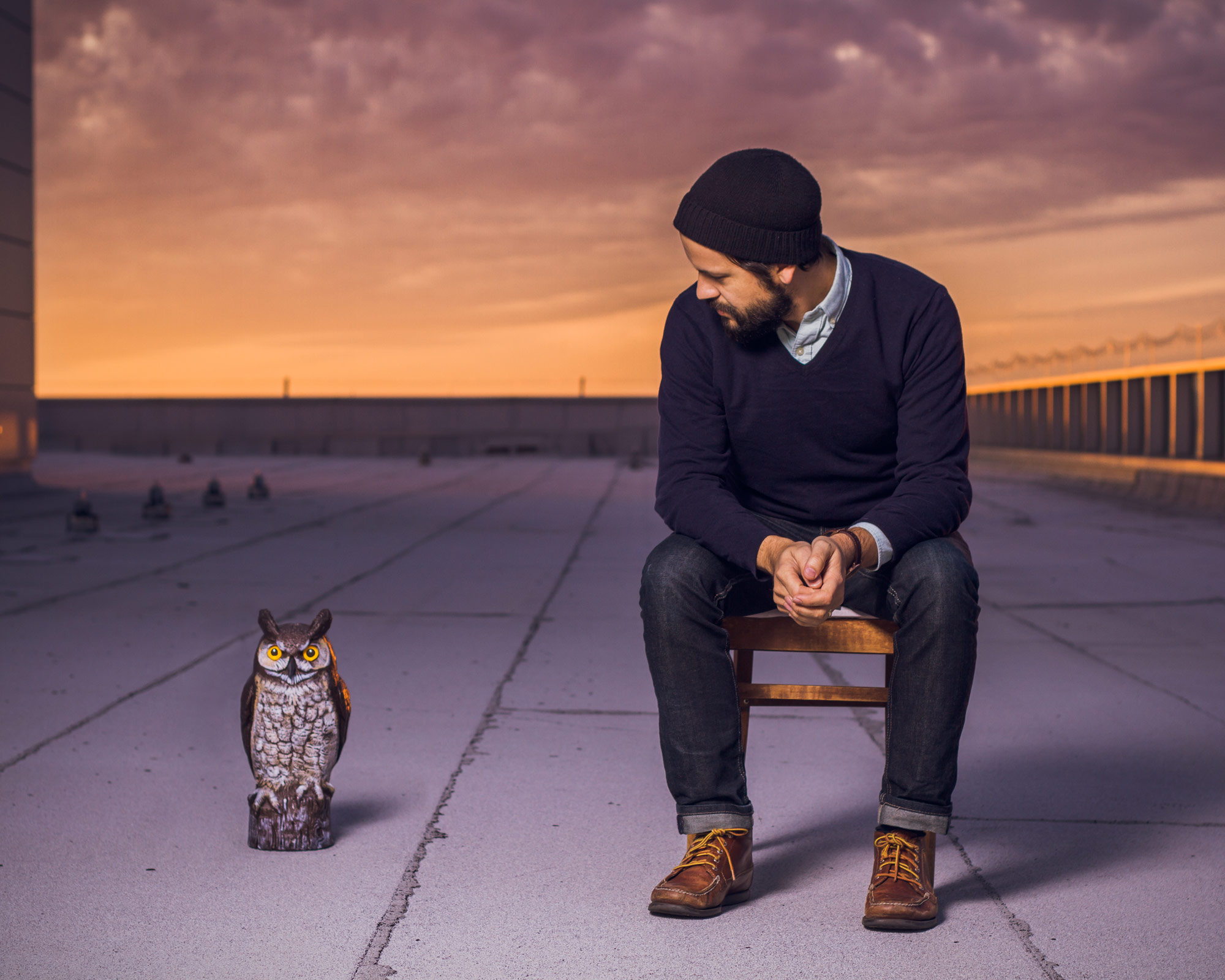
- Interview by Tina Essmaker January 7, 2014
- Photo by Brian J. Smith
Jacob Escobedo
- designer
- illustrator
Jacob Escobedo is VP/Head of Design of Cartoon Network and Adult Swim’s branding and marketing lair called Creative Group. Since 1999, he has had a part in pushing the limits with nontraditional experiential marketing and has continued to champion outlandish ideas. His passion for art, graphic design, and illustration shines through in his personal endeavors, including iconic album art for musicians and illustrations for The New Yoker.
Interview
Describe your path to what you’re doing now.
I grew up in Southern Nevada, with my dad, who was a first-generation Mexican American and knew very little English. He was an outsider artist, and he got me started in art. He was also a hoarder, so our house was full of trash, art, comic books, novels, and thrift store finds. This was before the Internet, and my world was expanded by all of the stuff my dad collected, which informed me as an artist.
Growing up in Nevada meant that I had a ton of time to hang out and experiment. I did a lot of collage work and picked things from whatever my dad had lying around in order to create my own collection of art. I liked to collect items for their covers, not necessarily their content. I became very interested in design and art because I liked how people could refine what they were doing into one image to represent themselves. That was the start of everything.
After high school, I went to study art at the University of Utah in Salt Lake City, but I didn’t like the environment. I liked learning about art, but I didn’t feel like people were taking it very seriously or pushing me to do anything different. I knew that I had it in me to push myself and learn the things I needed to on my own, so I dropped out of school. Then I met an illustrator named Nate Williams, who inspired me to start doing illustrations for publications. I started painted every night, creating very surreal, comic-like drawings. And that’s where my real art education came from: teaching myself and working freelance jobs.
At night, I did piecemeal illustration work for independent magazines and newspapers, but I paid my bills through day jobs—and I had the weirdest day jobs. (laughing) I worked at Burger King as a line cook, and it was awful. I recall having to wear an oversized Pocahontas t-shirt for some kind of promotion and having to walk outside to use the pay phone on the side of the road; I was wearing the Pocahontas shirt and my fingers were burned and covered in bandages—I think that job was the lowest point in my life. I have also tiled bathrooms, loaded trucks at UPS, and worked at a mortgage company. None of those jobs actually relate to what I do now, but that’s how I made money while I was building a portfolio.
In 1999, I married a Southern girl, and we moved to Atlanta. I started working for a temp agency that happened to have Cartoon Network as a client, and I decided to show my portfolio to Cartoon Network’s art director. I didn’t really know how to turn on a computer at the time, so my published work was just a stack of paintings and drawings, but the art director and I hit it off. My work fit with what they were looking for: it was cartoony, fun, colorful, and surreal. I started working there in 2000, and I was so stoked.
Adult Swim launched shortly after that. Cartoon Network and Adult Swim are basically two offices on different sides of a highway: Cartoon Network is a more corporate office building, and Adult Swim is like the step-child, housed inside an old Turner Broadcasting warehouse—I think it used to be a carpet warehouse, actually. (laughing) I asked to work with Adult Swim while they were still forming, and in 2003, I moved my office across the highway to start art directing for them full-time. But when Cartoon Network started creating Adventure Time and Regular Show a few years ago, I became more interested in working with them again, so I came back across the street, and now I have two offices. (laughing)
Ryan and I love Adventure Time!
It’s the best!
It doesn’t matter if you’re young or old; everyone seems to love that show.
Yeah. It is one of the smartest and strangest shows on television, and I feel like it’s changing the texture of children’s programming. I’m curious to see what’s next, because it’s such an original show, and I think it’ll probably end up spawning more like it. We’ve been doing a lot of work around Adventure Time because it’s such a hit right now.
So you work for Cartoon Network and Adult Swim right now?
Yes. I wear a lot of different hats, but my official title is Vice President of Creative Design. Basically, I have two teams at both networks who oversee the on-air packaging, marketing, events, off-channel support, DVDs, and everything else surrounding shows—it bleeds out into all areas. We’re having a lot of fun experimenting with things that are changing the way TV shows have always been done. Apart from that, I do a lot of freelance illustration, art direction, and design on the side.
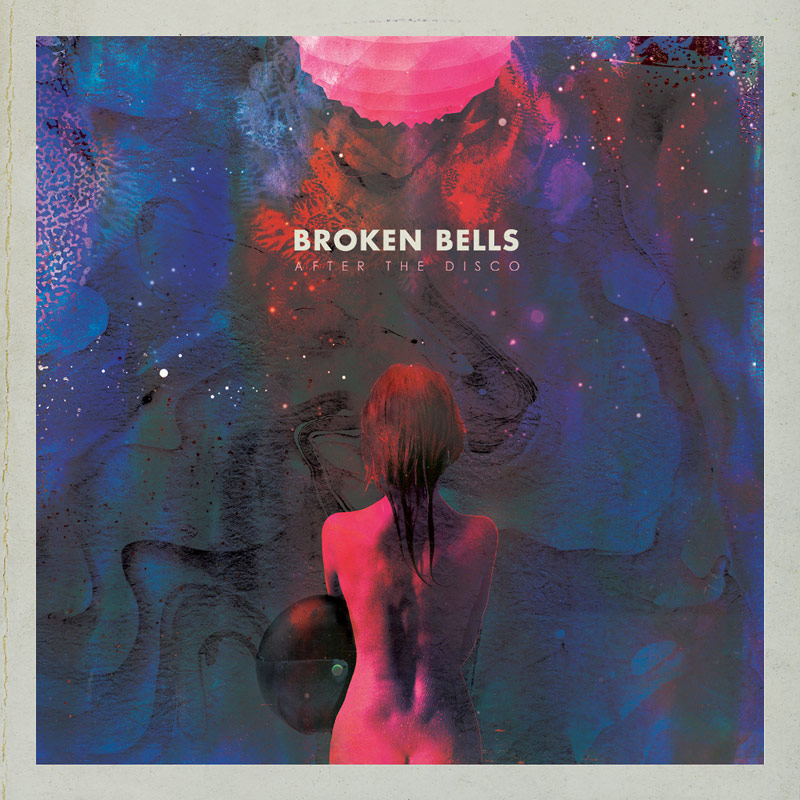
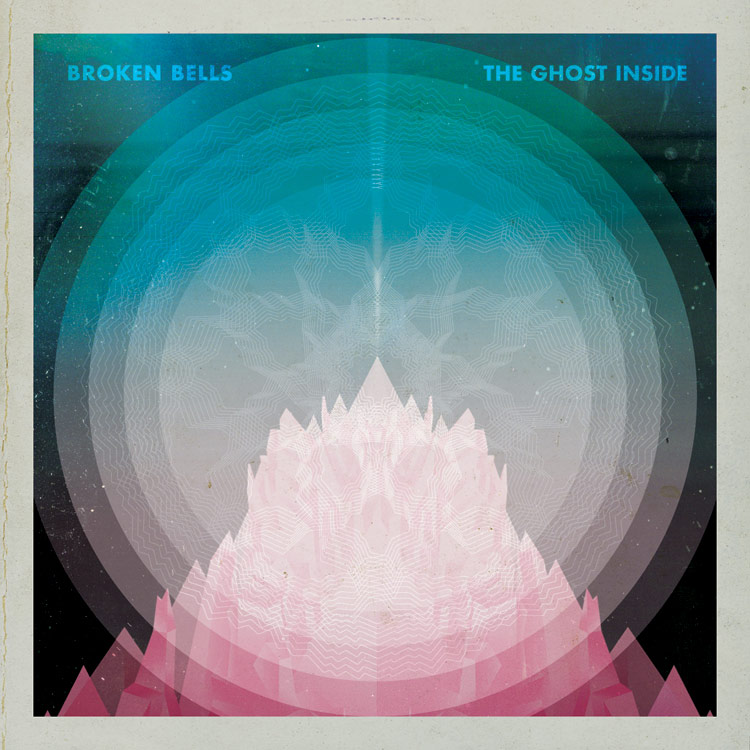
You do a lot of album covers. How did you get into that?
I’ve always been really interested in music. Back when I started at Adult Swim, I met a guy named Jason DeMarco who started a music label called Williams Street Records. The musicians Danger Mouse and MF Doom pitched an idea for a collaborative project under the name Danger Doom. The concept album, The Mouse and the Mask, centered around Adult Swim shows, and I ended up doing the cover for that album, which is how I met Danger Mouse. Since then, Danger Mouse has kept coming back to me to do work for his side projects.
One of my favorite experiences was when I did some work for a collaboration album between Danger Mouse and Sparklehorse called Dark Night of the Soul. Danger Mouse was having a hard time putting the album out through his label, so he had the idea to put out a limited edition book with a blank CD in the back: if the album leaked, people could burn it onto the CD. He had me work on the book, which was full of photographs by David Lynch, who is a big icon for me. I recall getting a hard drive of David’s photographs and I was so excited that I couldn’t contain myself. I was trying to nail the cover for the album, but I wasn’t getting a response from anybody. When I finally did get an email, it was from David Lynch; it simply said, in all caps: “TRY HARDER.” I was so upset that I stayed up all night working until I came up with something that everyone liked. I’ll never forget getting that message from David and thinking, “Wow, this is like getting an email from God.”
After that, I worked on an album called Rome, which features Jack White and Norah Jones. It’s great; it sounds almost like a soundtrack to a movie that doesn’t exist. I also did some some work for Gnarls Barkley, and I’ve recently been working a lot with Broken Bells and the Shins.
Did all of that work come by word of mouth?
Yeah, one thing led to another. Really, though, it has everything to do with Danger Mouse. When he and James Mercer from the Shins started Broken Bells, I was asked to come in and work on the first album. A little while after that, James contacted me when I was in Nevada on a road trip with my family. I was sitting around a campfire, staring at the mountains, when I got the message to do a cover for the Shins’ latest album, Port of Morrow. It ended up being such an inspired image because it was directly influenced by the Southwest; it’s a different experience out there. I’m so used to being around buildings and tall trees that when I get out into the desert, it transforms me.
Was there an “aha” moment when you realized that you wanted to be an artist?
There were a couple. One of them was thanks to my high school art teacher, Larry Williamson. He was a rebellious, grouchy asshole, and not many people liked him. (laughing) He ran the art department at the school, which was in an old concession stand across the football field, so it was completely removed from everything else. He allowed me to have a back room in the building that he filled with art supplies. He told me, “Come up with your own curriculum, because I can’t teach you anything.” I would sit in the back room and come up with projects while he brewed me coffee. I stacked my schedule so that I had three art classes in a row and could just hang out in that building. That was the moment when I understood that I could experiment on my own and figure out what kind of art I wanted to be doing.
The other “aha” moment happened after I met that illustrator I mentioned earlier, Nate Williams. He wasn’t going to school, but he was making money doing illustration, and his work was unlike anything else I had seen at the time. I remember looking at it and thinking, “I could totally make money doing really weird art.” He made a lot of stuff by scanning and manipulating drawings on a computer, and that changed me because I was only drawing and painting at that time. Seeing him work led the way to for me to do more work on the computer with Illustrator and Photoshop.
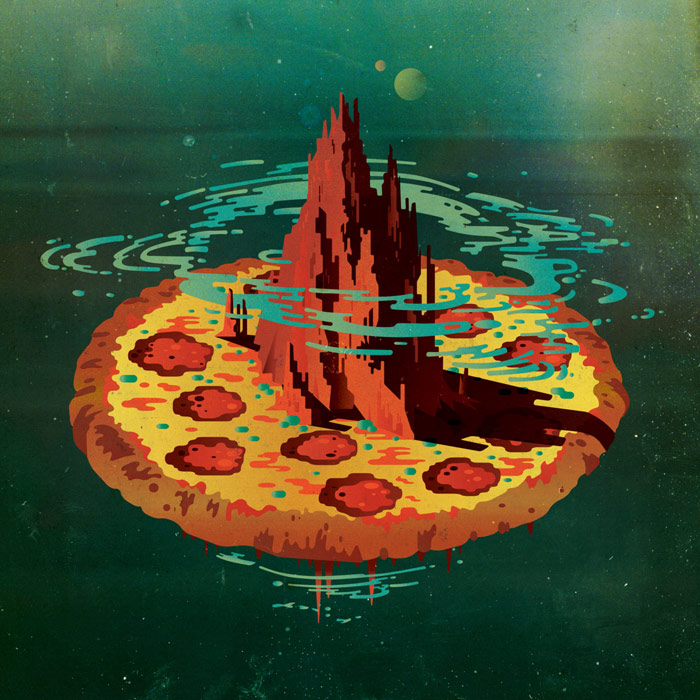
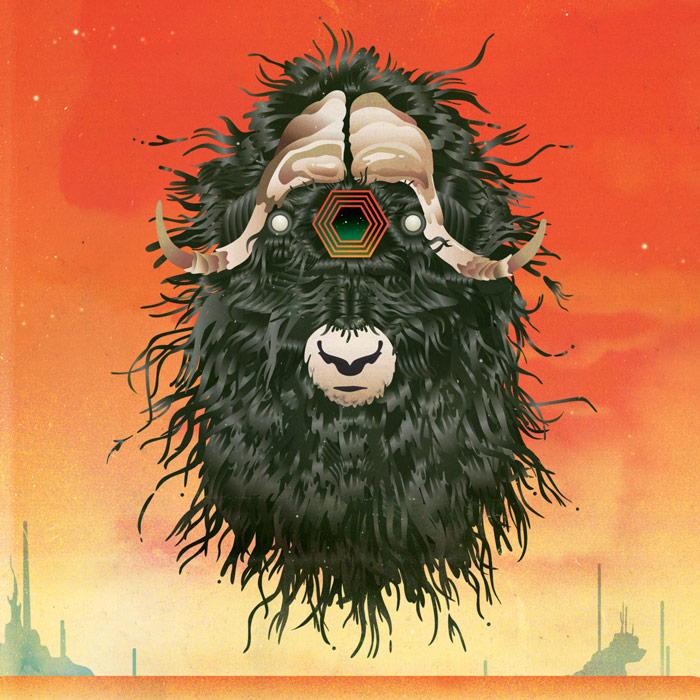
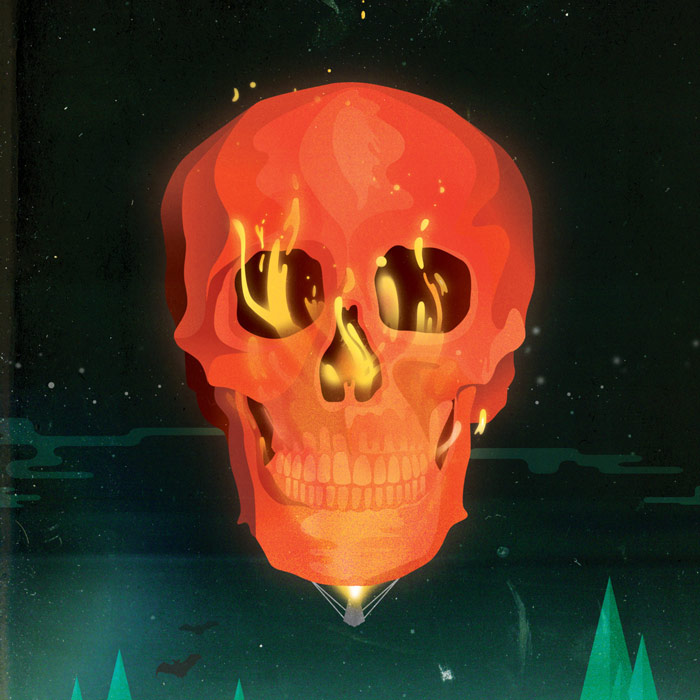
Would you consider both of those guys mentors?
They were definitely important in my life. Michael Ouweleen was also an creative mentor to me, and so was Mike Lazzo, who runs Adult Swim. He is essentially the same character as Larry Williamson: a crabby guy in a concession stand across the street. (laughing) It’s like I traded one mentor for another.
Has there been a point when you’ve taken a big risk to move forward?
Dropping out of school and trying to make it on my own was a huge risk. I wouldn’t recommend that for anybody, unless you have the internal motivation to do it.
Focusing on Adult Swim as a career wasn’t risky, but the whole thing itself was a big risk. They put a bunch of money into these weird, experimental shows, but it turned out great, and it still is; it’s a great avenue for new and different stuff.
Are your family and friends supportive of what you do?
Yes. I have an amazing wife who is an artist as well, and her focus is more on 3D stuff. We started having kids at a young age, though, so she’s been raising them—they’re our new art projects. (laughing) She’s very influential in my life: she’s extremely supportive and always keeps me in check. Anytime I’m done with a project, she’ll come over and really criticize it; she’s the hardest critic, and it pisses me off, but my work always turns out great because of that. She’s basically like my art director. (laughing)
Do you feel a responsibility to contribute to something bigger than yourself?
Definitely. I’m always looking for projects that I can work on for free to benefit other things. I just finished up a movie poster for a documentary called Tomorrow We Disappear. It’s about an artist colony in India. They live on the streets and are being pushed out by developers who are coming in to build giant apartment buildings. It’s a really beautiful story told through the eyes of a puppet maker who does street shows.
I saw the Creative Mornings talk you gave. Do you do a lot of speaking?
I do a bit of educational stuff, like holding art workshops at my kids’ schools, but I’m not wild about public speaking. I’m a really introverted person, so it’s hard for me to stand up in front of people and form sentences. It’s rare that I do things like that, but when I do, it feels really good after it’s done.
A couple years ago, I was supposed to do a talk at an F5 conference for Motionographer, which is a great blog about animation design. The night’s keynote speaker was Wayne White, another icon of mine—he designed the sets for Pee-wee’s Playhouse and went on to become a famous painter. Sharing a stage with somebody so amazing made me infinitely scared, and I got so nervous beforehand that I kind of had a mental breakdown. I ended up grabbing a donkey piñata—I’m half Mexican (laughing)—and rode it out on stage while I threw candy at people in the front row. I knew that if I could do that, then I could do anything, and it totally worked: I wasn’t nervous after that.
“…in order to make it, you have to be really ambitious. Talent without ambition is nothing; you have to drive yourself to make things. And it’s the same thing with creativity: if you have a lot of ambition without creativity, you might not go anywhere.”
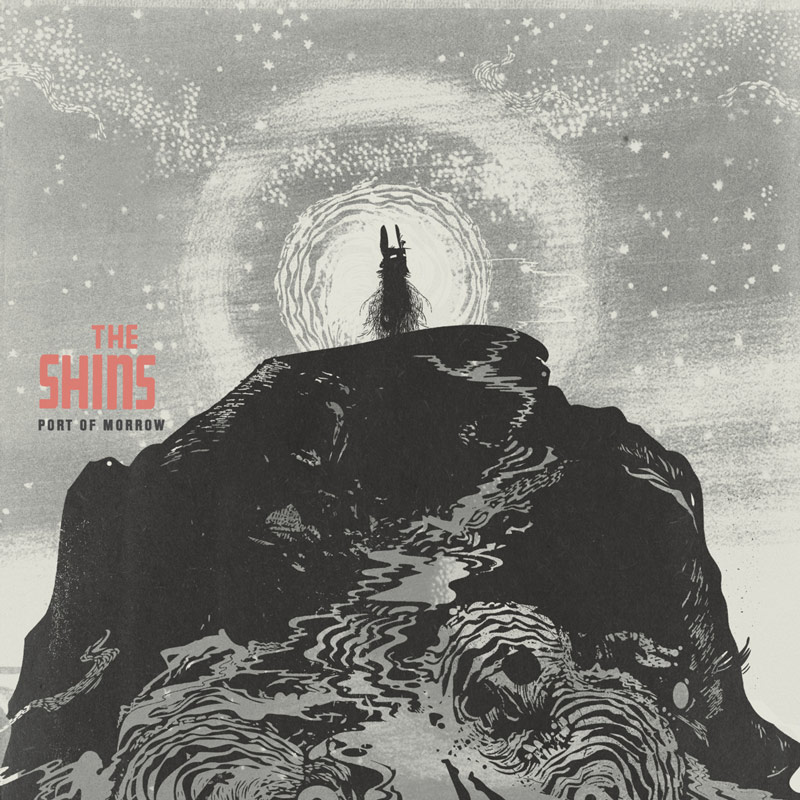
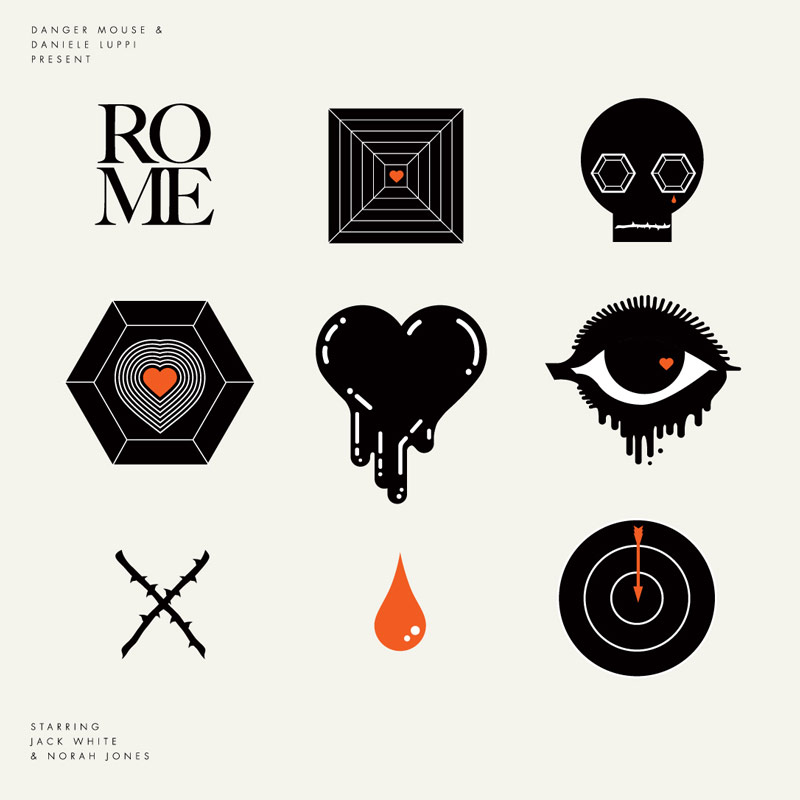
That’s amazing! So, are you creatively satisfied?
I would say yes. That’s why I keep doing projects on the side: I feel like I’m able to express myself in ways that I can’t when I’m at work. Even though I’m exhausted at the end of the day, I sometimes hyper-extend myself to do those projects in order to be more creatively satisfied.
Cartoon Network and Adult Swim are both really creative places, though. I’m surrounded by amazing, funny, talented people every day, and all of the designers here on staff are incredible artists in their own right. I’m constantly challenged and inspired by them and everything that they do.
Is there anything new you’d like to explore in the next 5 to 10 years?
I’m really interested in character design and doing art direction for an animated show. About five years ago, I help create Freaknik: The Musical, which was a ridiculous special that we aired on Adult Swim. I created all the characters, and it was a really fun experience for me. I’d love to do more of that in the future.
I’ve also really started to enjoy 3D stuff and creating more sculptural elements. I want to start working more with costumes and sculpture in my designs.
I don’t know—I’m so busy working that I can’t even think about tomorrow, so talking about five years from now feels like forever!
If you could give advice to a young person starting out, what would you say?
My best advice is that, in order to make it, you have to be really ambitious. Talent without ambition is nothing; you have to drive yourself to make things. And it’s the same thing with creativity: if you have a lot of ambition without creativity, you might not go anywhere.
You’ve got to really put yourself out there, too. Now, more than ever, you can do that: you can have your own business up in two days; you can start a website; you can run things out of your bedroom—you can do anything you want. Back when I was growing up, you had to physically be there to get paid to do something. Now you can be anywhere and be paid to do anything.
How does living in Atlanta impact your creativity?
I love the South and am really interested in the culture here. I like the literature—like Flannery O’Connor and Cormac McCarthy—and all of the dark history surrounding the South is fascinating to me. I think that feeds into my work. I’m also interested in rap culture and, more recently, food culture. There’s a big food scene here in Atlanta, and I just moved to Decatur, which has some of the best restaurants in the country. My wife and I love to cook, and the climate here is great for gardening, so we get to use a lot of fresh vegetables and herbs.
Is it important to you to be a part of a creative community of people?
Definitely. I’ve always tried to embed myself in pockets of creative people. It’s really healthy for a creative person to be in an environment where they’re pushed by their peers, because you can get stale if you don’t have that. The people here at Cartoon Network and Adult Swim are amazing: I’m constantly feeding off of what they’re doing, and vice versa. Adult Swim is still a very small group of people, too, which I like. We have a lot of time to talk to the creators, meet up, and hang out. Because the teams are small, we don’t get bogged down by all the processes that hurt the creative spirit.
We actually just finished a project for the Adult Swim Singles. Once a year, we put out music singles for people to download. This year we created really interesting sculptural build-outs and costumes, which we photographed for the single covers. We created all of them in-house out of raw materials, like paper and canvas. For the Andy Stott cover, all the green balls in the foreground are actually ping-pong balls that we hung on lines. It’s all practical; none of it’s digital. And we basically did them right in the office, with a lot of hot glue guns and feathers. (laughing) It’s a great environment here.
“I’ve always tried to embed myself in pockets of creative people. It’s really healthy for a creative person to be in an environment where they’re pushed by their peers…”
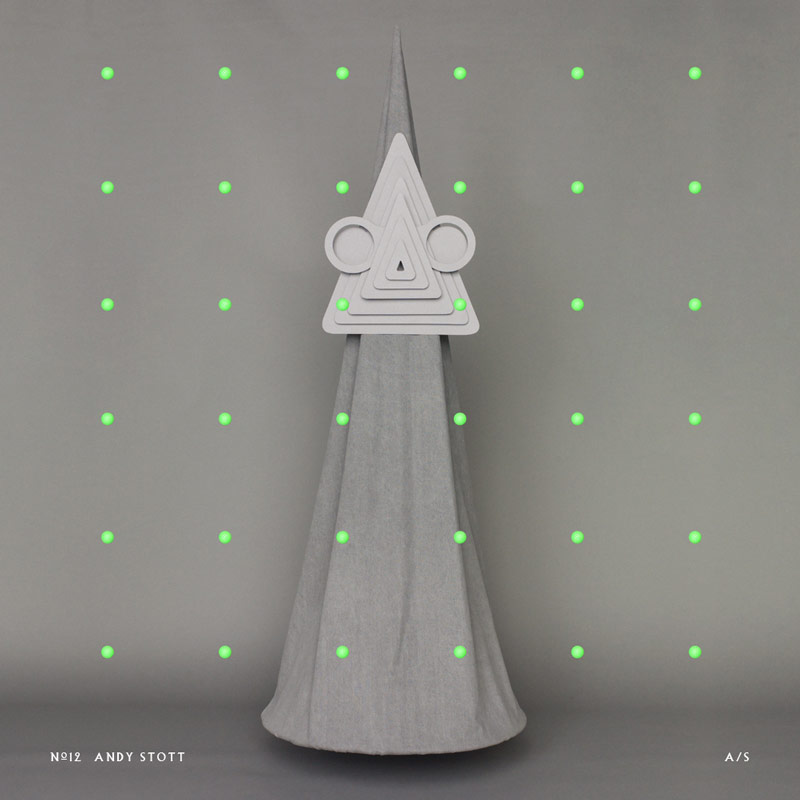
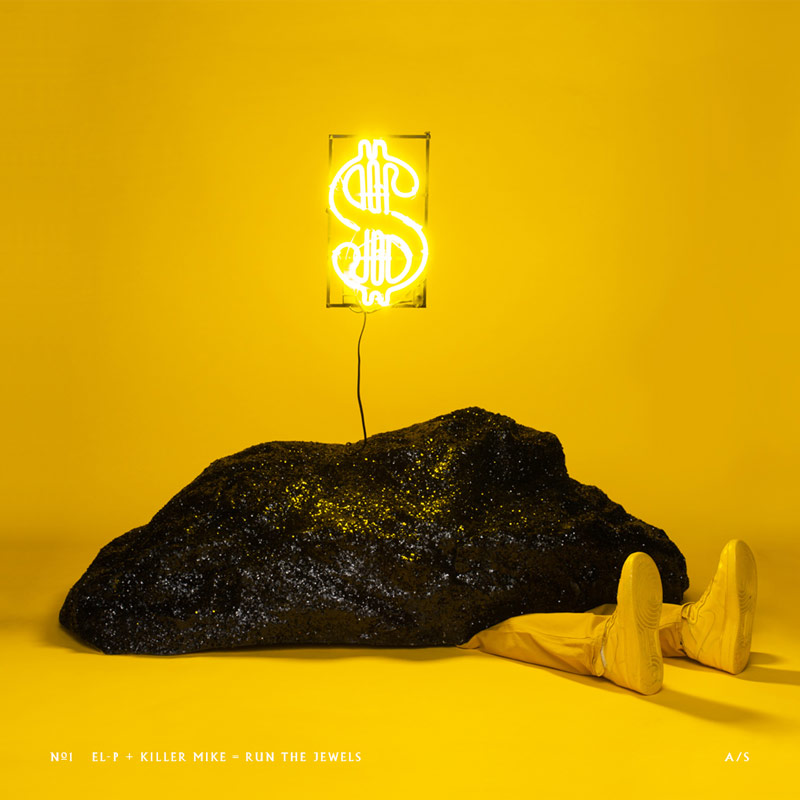
What does a typical day look like for you?
A typical day starts with a lot of coffee. I need three shots of espresso before I can actually form words. (laughing) Once I get to the office, I hate to just sit down at the computer and work, so I do a lot of walking around and getting involved in everybody’s projects. The Adult Swim warehouse is a great space to do shoots and projects, so I’ll check in on those if they are happening. For example, we just worked on a Finn and Jake Adventure Time balloon for the 87th Annual Macy’s Thanksgiving Day Parade, and we had to figure out how to design it aerodynamically so that it wouldn’t compete with the wind. I had no idea that I’d be working on a Macy’s parade balloon that day. It’s fun because I’m constantly doing stuff like that, and we get to do so many different things here.
Is there any music that you’re really into right now?
I’ve been listening to a lot of Alan Vega, who is one-half of Suicide. I’ve also been listening to a lot of Destruction Unit, and I really like the band Beak right now. The new Blood Orange album, Cupid Deluxe, is really good, and the Darkside’s Psychic is a great atmospheric album.
Any favorite movies or TV shows?
Favorite movies is a tough one. I like comedies, especially older ones like Raising Arizona and Harold and Maude. I love There Will Be Blood, and Drive was really good, too.
You mentioned being into cartoons as a kid. What were your favorites?
Chuck Jones was really big for me; his comedic timing and the character stylization was amazing, so Looney Toons is definitely up there! I was also really informed by a lot of early Cartoon Network stuff, like Dexter’s Laboratory, The Powerpuff Girls, and Cow and Chicken. I paid attention to all of that, and I guess it paid off.
Any favorite books?
Blood Meridian by Cormac McCarthy is my all-time favorite book, and I really love Wise Blood by Flannery O’Connor. I recently got into Donald Barthelme, who writes weird, surrealist short stories as well as some hard-to-read stuff. Right now, I’m finishing up Tenth of December: Stories by George Saunders. It’s so good; he has an amazing way with words.
I also really love David Foster Wallace—all of his stuff is really good. I’ve started trying to read The Pale King, which was released posthumously. He was still writing it when he died, so I think they had to reconstruct it. It is so awesome—there are certain chapters in it that are the best writing that I’ve ever read.
I’m also really interested in and collect children’s books, like the Little Golden Books series.
What is your favorite food?
Indian and Mexican food are probably at the top of my list. My favorite thing to eat is a homemade tamale: it’s such an ingrained memory of special times. When I was a kid, our family would get together and all the women would sit around a big pot, making tamales. I’d eat about ten of them. (laughing)
What kind of legacy do you hope to leave?
I hope that when people look back on my work, it doesn’t look dated. I hope that it can move through time periods and still have an effect on people in the future. It’s so ridiculous to say, but I don’t want the work I’m doing now to look like now. I want it to feel timeless.
“I hope that when people look back on my work, it doesn’t look dated. I hope that it can move through time periods and still have an effect on people…It’s so ridiculous to say, but I don’t want the work I’m doing now to look like now. I want it to feel timeless.”